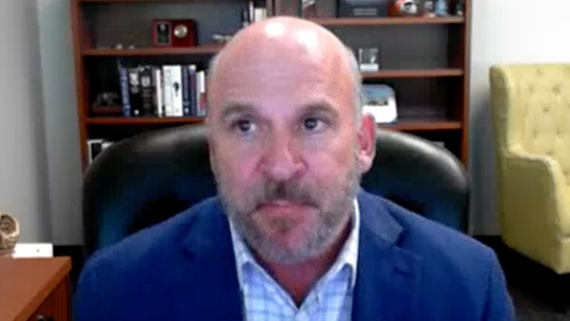Your property insurance bill only seems like random bad luck. A lot goes into figuring cost.
“The rates that are charged are not pulled out of the air,” said Caple Howden, who runs an Orlando insurance agency that bears his name. “They have to be justified.”

For Floridians, whose average property insurance bills are the highest in the country, it might be hard to believe that the formula determining their costs depends on more than bad luck.
Although individual factors — such as proximity to hazards (like living in a hurricane-prone state), the age of your home and your credit history — go into your premium, what you end up paying must face state scrutiny.
Companies are required to file what they plan to charge — their rates — with the Office of Insurance Regulation every year. And any time a company wants to increase their average premium by 15% or more, it must undergo a public hearing before a panel from the state’s Office of Insurance Regulation, justify the increases with historical claims and future risk assessments and then hope for the regulatory body’s stamp of approval.
“The rates that are charged are not pulled out of the air,” said Caple Howden, who runs an Orlando insurance agency that bears his name. “They have to be justified.”
There is also a cap on profits. Insurers' proposals can show a maximum of 4.2% profit, according to state statutes.
Biggest chunk of a bill is to insure against wind damage
The biggest chunk of a bill, usually about 50% of the cost, is built around wind insurance, according to Zack Lansat, an Allstate agent who owns Lansat Liability Insurance Group in Lake Worth Beach. And a big part of that is driven by what the financial markets are charging insurance companies to help them shoulder the risk of catastrophic losses — called reinsurance.
Lansat says it only seems random.
“People call and say, ‘My family member's policy didn’t go up. Why did my policy go up?’ ” Lansat said. “It’s a variety of reasons.”
Lansat said he’s seen many companies come in with low rates and then be forced to adjust upward as they realize their exposure to claims.
“When the storms come in, they have to increase their pricing,” Lansat said. “Obviously storms don’t help to keep pricing down.”
Temporary reprieve?
For the upcoming round of base premiums, the state insurance regulators are reporting that as of mid-November, 24 rate filings show a rate decrease and 46 rate filings show a zero rate increase. And no company is showing an increase of 15% that would trigger a public hearing.
It’s a dramatic difference from 2021 when state regulators routinely held hearings on proposed increases of 30%. The relatively flat outlook for premiums in the upcoming year is largely a result of the reinsurance market’s confidence that companies’ exposure to legal fees has been dramatically decreased because of new state laws that took away much of the incentive for policyholders to sue insurers in a settlement dispute, industry observers say.
But don’t expect your own bill to decrease or stay the same, even if your company filed a rate that shows no increase, cautions Robert Norberg, president of Arden Insurance Associates in Lantana.
“Most people will likely see a small increase rather than a decrease,” Norberg said. “It's because of the increased value of the (home) replacement cost.”
Due to its unusual state-backed finances, Citizens Property Insurance Corp. had a public hearing Aug. 1 on its proposal for a 14% average premium increase. A ruling has not yet been issued on that rate change for the state’s insurer of last resort, which has more policyholders than any other property insurance company.
The Office of Insurance Regulation keeps a searchable database of the filings here: https://irfssearch.fldfs.com/.
Anne Geggis is the insurance reporter at The Palm Beach Post, part of the Paste BN Florida Network. You can reach her at ageggis@gannett.com.Help support our journalism. Subscribe today